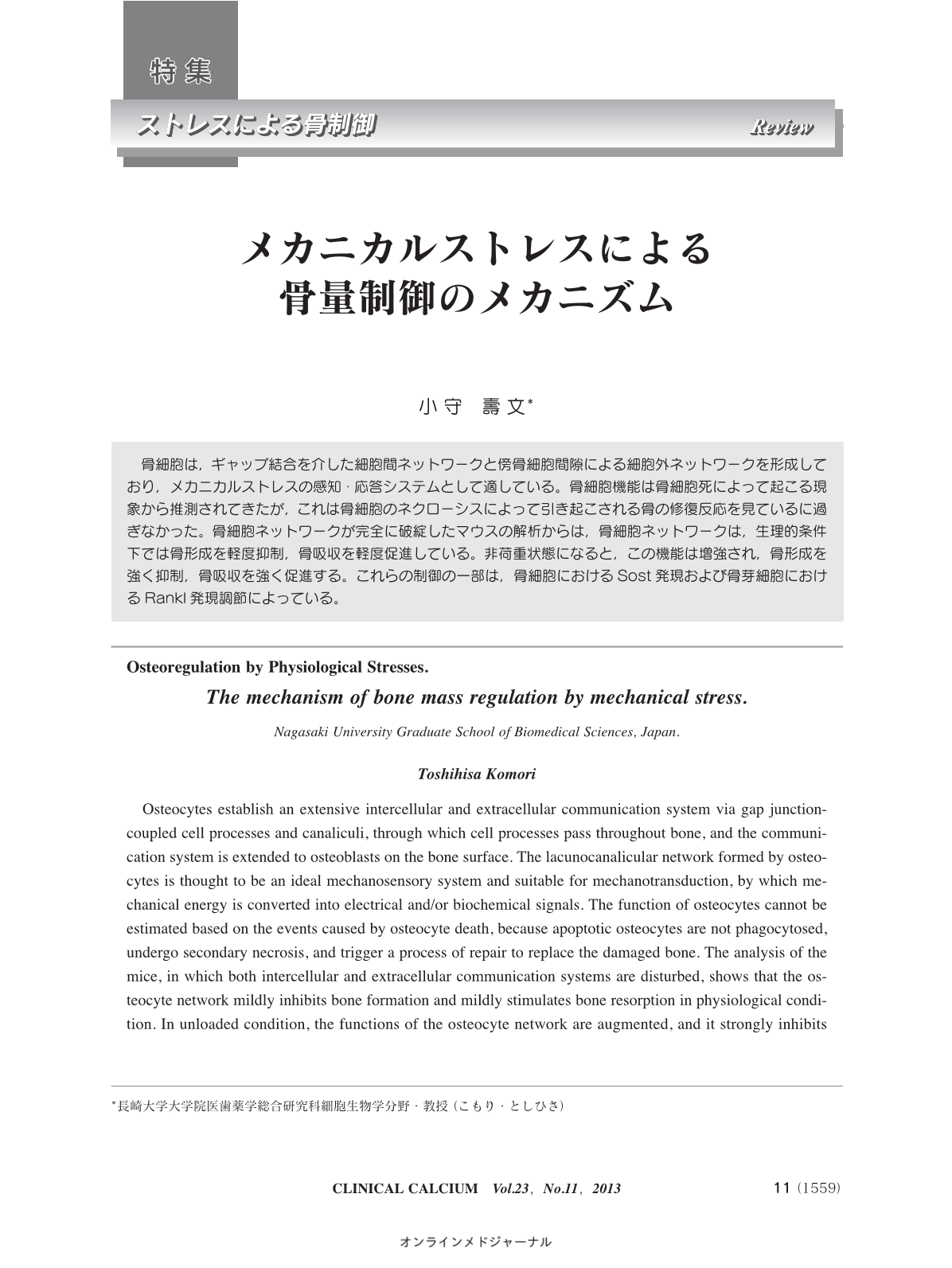Japanese
English
- 有料閲覧
- Abstract 文献概要
- 1ページ目 Look Inside
- 参考文献 Reference
骨細胞は,ギャップ結合を介した細胞間ネットワークと傍骨細胞間隙による細胞外ネットワークを形成しており,メカニカルストレスの感知・応答システムとして適している。骨細胞機能は骨細胞死によって起こる現象から推測されてきたが,これは骨細胞のネクローシスによって引き起こされる骨の修復反応を見ているに過ぎなかった。骨細胞ネットワークが完全に破綻したマウスの解析からは,骨細胞ネットワークは,生理的条件下では骨形成を軽度抑制,骨吸収を軽度促進している。非荷重状態になると,この機能は増強され,骨形成を強く抑制,骨吸収を強く促進する。これらの制御の一部は,骨細胞におけるSost発現および骨芽細胞におけるRankl発現調節によっている。
Osteocytes establish an extensive intercellular and extracellular communication system via gap junction-coupled cell processes and canaliculi, through which cell processes pass throughout bone, and the communication system is extended to osteoblasts on the bone surface. The lacunocanalicular network formed by osteocytes is thought to be an ideal mechanosensory system and suitable for mechanotransduction, by which mechanical energy is converted into electrical and/or biochemical signals. The function of osteocytes cannot be estimated based on the events caused by osteocyte death, because apoptotic osteocytes are not phagocytosed, undergo secondary necrosis, and trigger a process of repair to replace the damaged bone. The analysis of the mice, in which both intercellular and extracellular communication systems are disturbed, shows that the osteocyte network mildly inhibits bone formation and mildly stimulates bone resorption in physiological condition. In unloaded condition, the functions of the osteocyte network are augmented, and it strongly inhibits bone formation and strongly stimulates bone resorption, at least in part, through the induction of Sost in osteocytes and Rankl in osteoblasts.



